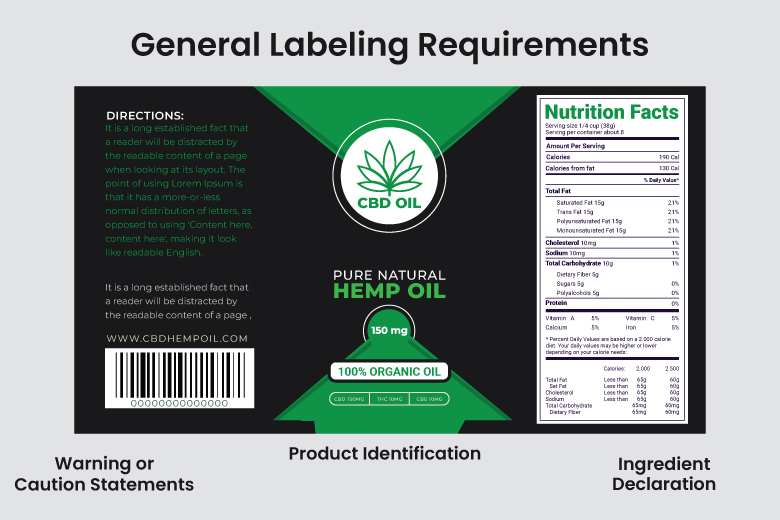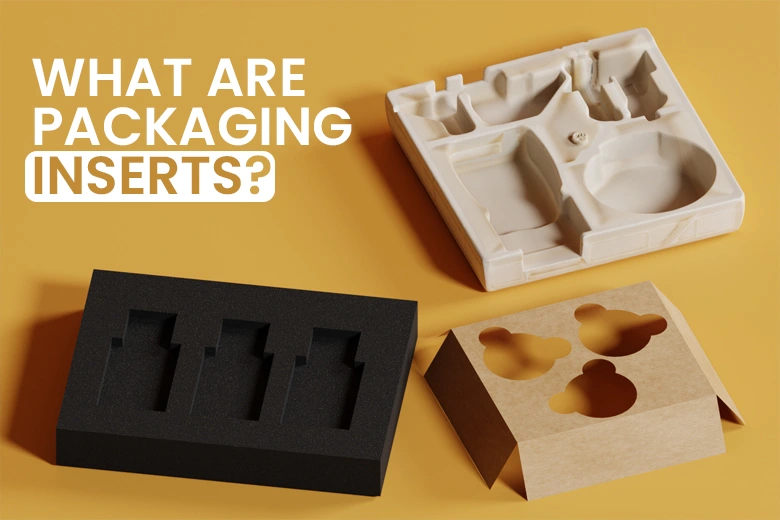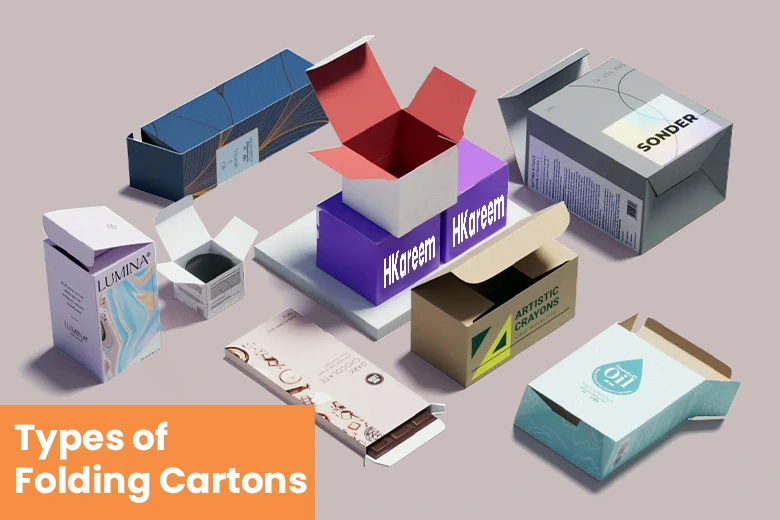In the past few years, the demand for cannabidiol (CBD) products has increased as consumers find these remedies for relieving pain and offering better sleep. As the CBD market grows, ensuring product quality and consumer trust is essential.
A key aspect of this is proper labeling and third-party lab testing. Labels provide critical information about the product’s contents, usage, and safety, while third-party lab testing checks for potency, purity, and contaminants. These measures ensure products meet standards and are safe for consumers.
For businesses, adhering to labeling requirements and investing in third-party lab testing not only ensures regulatory compliance but also boosts brand reputation.
FDA’s CBD Product Evaluation
Detailed by Akin Gump, the FDA revealed significant findings from its ongoing sampling study of the cannabidiol (CBD) marketplace. The study, mandated by the Further Consolidated Appropriations Act, of 2020, tested 200 hemp products sold online, uncovering that nearly 55% had CBD levels differing from their labels by more than 20%, and almost half contained unauthorized THC. These mislabeling discrepancies highlight the need for strict regulations and quality control in the rapidly growing CBD industry.
Why Proper Labeling and Packaging Matters?
Labeling and packaging play a crucial role in advertising and providing essential information for your CBD products. Labels provide essential information, including product contents, dosage instructions, and safety warnings, enabling consumers to make informed decisions.
Packaging often includes safety warnings and handling instructions to prevent misuse and potential harm. For instance, labels on pharmaceuticals indicate dosage and potential side effects.
Proper labeling ensures that products can be traced back through the supply chain in case of recalls or safety issues. This is crucial for quick response to health risks and contamination.
Accurate packaging & labeling is required to comply with governmental regulations. This includes the Food and Drug Administration (FDA) regulations in the United States, which mandate that labels must be truthful and not misleading.
Federal vs. State Regulations on CBD
The regulation of CBD products in the United States is complex due to the lack of strict federal guidelines. While the 2018 Farm Bill legalized hemp-derived CBD containing less than 0.3% THC, the FDA has not yet implemented comprehensive federal regulations specifically for CBD labeling. This regulatory gap has led to significant variation in how states manage CBD products. Each state has developed its own set of rules governing aspects such as labeling, dosage, and marketing claims.
For instance, California requires detailed labeling that includes CBD source information and lab test results, while Colorado mandates QR codes linking to lab results and specific dosage instructions. These differences highlight the importance for businesses and consumers to stay updated with local regulations to ensure compliance and avoid legal issues.
| Aspect | Federal Regulations | State Regulations |
| CBD Legalization | Legal under the 2018 Farm Bill with <0.3% THC | Varies by state; generally aligns with federal law but includes additional requirements |
| Labeling Requirements | Minimal federal guidance; The FDA has not provided specific CBD labeling rules | State-specific rules; e.g., California requires source info and lab results, Colorado requires QR codes and dosage instructions |
| Dosage Information | No federal standards for dosage on labels | State-specific guidelines; California and Colorado provide specific dosage requirements |
| Marketing Claims | Restricted by the FDA; cannot make unverified health claims | State laws often align with federal restrictions but may include additional prohibitions |
| Compliance | General federal guidance; enforcement varies | Strict state-specific enforcement; businesses must adhere to local regulations |
For up-to-date information on state-specific CBD regulations, please visit The NCSL site.
General Labeling Requirements

The basic requirements for labeling are as follows:
Product Identification:
The first thing that you have to keep in mind when creating your label is to clearly identify what your product is and does. These details must be displayed on the Product Display Panel (PDP). At least one listing is required, though it can be beneficial to list it in multiple places.
Mention Net Quantity of Contents:
Now, you must add the net quantity or the amount of your product excluding the weight of the packaging. For instance, if you are offering a CBD tincture of 10ml, then it should be mentioned on the label “10 ml” excluding the weight of custom CBD boxes. The inner and outer packaging must both contain the net contents within one-third of the PDP.
Name and Place of Business:
The next step is to identify the name and address of the manufacturer, and, if necessary, the distributor or packer. You must include the name on both the inside and outside of your product’s packaging. You may also include a phone number, but it is not required.
Ingredient Declaration:
The next step is to add a section of ingredients. You have to be clear about all the ingredients that you are using including the exact amount of CBD and THC. To prevent CBD products from simply listing CBD as a way to avoid any rules, this requirement clearly aims to prevent that.
In the absence of outer packaging, the substances must be contained within the main package.
Warning or Caution Statements:
While not all states have this mandate, it could become a widespread regulation as more states legalize CBD and Cannabis.
It is advisable to include a statement such as “The FDA has not evaluated this product for safety or efficacy,” as is common with other health products.
Including standard warnings for pregnant women, children, and individuals at risk is a prudent measure, similar to those found on medications.
Additionally, it is important to inform users that consuming hemp, CBD, or Cannabis may result in a failed drug test.
Disclosure of Material Facts:
It is critical that all pertinent product information, such as usage instructions and other crucial information, be clearly labeled on the product. For instance, a label could state “better for nighttime usage.”
Additional items to consider including are:
- Expiration Date
- Manufacturing Date
- Any Batch Codes
- Full-Spectrum, Broad-Spectrum, or Isolate Information
Common Mistakes to Avoid
When labeling CBD products, avoid these common mistakes:
- Misleading Claims: Do not make unverified health claims or suggest that the product can cure, treat, or prevent diseases. The FDA closely monitors and penalizes companies for such statements.
- Incorrect Labeling: Ensure all product information, including CBD concentration, ingredients, and usage instructions, is accurate. Misinformation can lead to legal issues and loss of consumer trust.
- Inadequate Warnings: Failing to include necessary warnings, such as potential drug interactions, risks for pregnant or nursing women, and the possibility of failing drug tests, can result in non-compliance with state regulations.
- Lack of Compliance with State Regulations: Each state has its own labeling requirements. Not adhering to these specific guidelines can lead to product recalls or legal penalties.
- Missing Batch Information: Ensure each product batch is traceable with batch codes. This is important for quality control and in case of recalls.
- Improper Storage Instructions: Not providing proper storage instructions can lead to product degradation, affecting efficacy and safety.
- Failure to List Expiration and Manufacturing Dates: Always include expiration and manufacturing dates to inform consumers about the product’s shelf life and freshness.
- Inconsistent Terminology: Use consistent and correct terminology such as full-spectrum, broad-spectrum, or isolate to describe your product. Inconsistent terms can confuse consumers and lead to mistrust.
By avoiding these common mistakes, you can ensure your CBD products are labeled correctly, maintaining compliance and consumer trust.
Best Practices for Cannabis Packaging
Below are the best practices to have when manufacturing your CBD boxes
- Child-Resistant and Opaque Packaging: Essential to prevent accidental ingestion by children and comply with state regulations.
- Tamper-Evident Materials: Use materials that ensure product safety and consumer confidence.
- Eco-Friendly and Sustainable Options: Prioritize environmentally friendly packaging to appeal to eco-conscious consumers and enhance brand reputation.
- Packaging Design and Brand Identity: Develop packaging that reflects your client’s brand identity while adhering to regulatory requirements to ensure compliance and marketability.
- Clear Labeling: Include necessary information such as usage instructions, warnings, and expiration dates to maintain transparency and trust.
As a leading packaging manufacturer CBM for CBD packaging boxes, we exemplify these best practices, offering solutions that combine safety, sustainability, and strong brand representation while adhering to all regulatory requirements. For inspiration, check out our CBD packaging ideas that highlight the right way to pack CBD products, enhancing both consumer trust and brand loyalty.
Conclusion
Proper CBD packaging and labeling are crucial for product quality, consumer safety, and following the law. As the CBD market grows, it’s essential to stay up-to-date with federal and state regulations to avoid legal issues and maintain consumer trust.
Businesses should focus on compliant labeling and packaging to meet legal requirements and ensure consumer safety. Regularly update practices to align with changing regulations. Consulting legal experts and staying informed about cannabis laws will help maintain compliance and industry reputation.
For more guidance, feel free to contact us or share this article with others in the industry.








